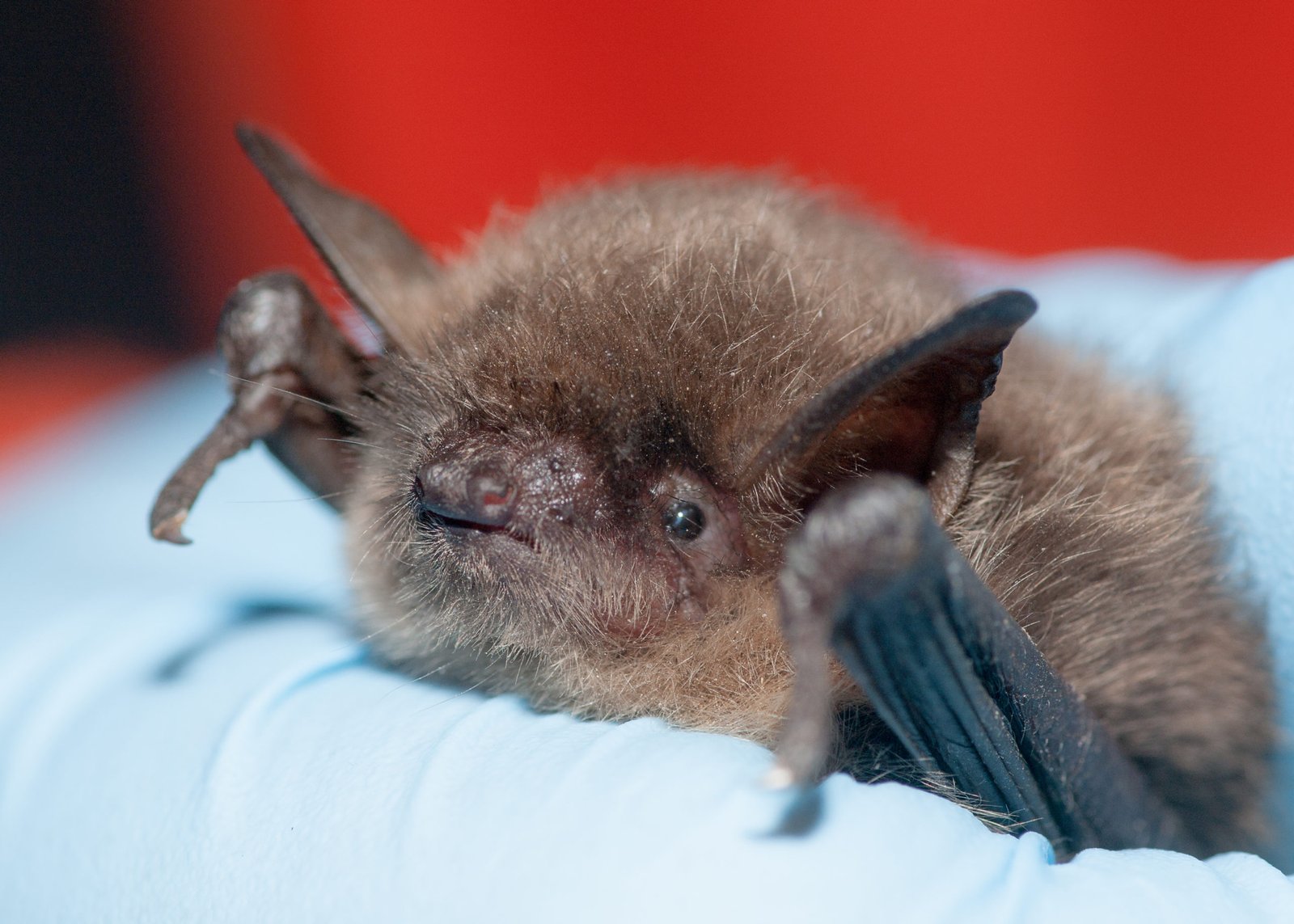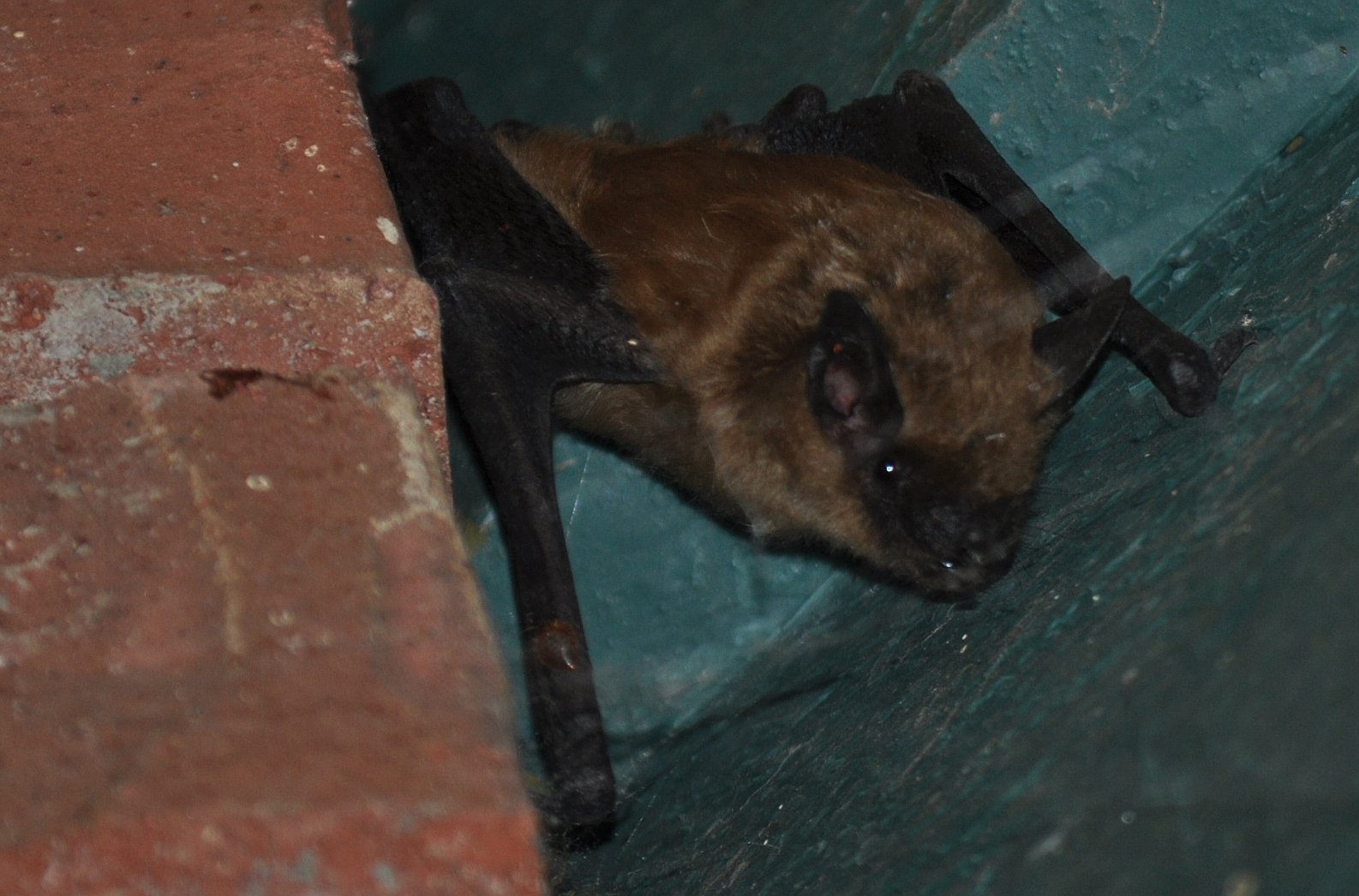California Myotis: Myotis Californicus

Physical Characteristics Of The California Myotis
With a forearm length of 30-35 mm, California bats measure 70-94 mm in total length, making them one of the smallest Myotis species in North America. There is black on the ears, wings, and tail membranes. The ears are comparatively long and, when pushed forward, extend beyond the nose. The hindfoot is small, less than half of the tibia’s length (6-9 mm). Northern individuals have smaller skull dimensions than those in the south.
Long and dull, the fur shows geographical color variation, ranging from rusty reddish-brown to rich-dark chestnut brown. In the elevated populations of M. Californicus, a darker fur is apparent. In arid areas where it is found, the fur is usually pale yellowish-orange.
The bat is particularly small in size and pale in color in low elevation areas. At the same time, it is darker in color in the forests of the Pacific Northwest and the forested highlands of Mexico.
In this species, there is no distinct sexual dimorphism, although females in most comparisons are, on average, larger than males. 1Go To Source animaldiversity.org -“Myotis californicus California myotis”
Learn More: U.S. Popular Bat Species
California Myotis Typical Behavior

The California Myotis species has been found to mate during autumn and spring months. Females form maternity colonies in spring or early summer, giving birth to one pup per year. In the winter, even at temperatures below freezing, these bats are known to be active periodically. California Myotis are known to live up to 15 years.
During the summertime, California Myotis roost alone or in small groups in caves, mines, rocky hillsides, beneath tree bark, and buildings.
Recent studies have recorded maternity colonies of up to 52 bats roosting under sloughing bark, large cracks, and hollows of ponderosa pine trees. Solitary individuals and small groups have been discovered in caves, mines, and buildings in winter.
California myotis are acrobatic fliers and use small waterholes to obtain the necessary moisture. Soon after sunset, individuals are most active and periodically rest at night roosts. 2Go To Source tpwd.texas.gov -“California Myotis (Myotis californicus)”
Habitat Of The California Myotis
This bat species is found primarily in forested habitats at lower altitudes. They roost in rock crevices during summer days, under loose bark, hollow trees and snags, and buildings. Caves and mines are popular for hibernacula. 3Go To Source fieldguide.mt.gov -“California Myotis – Myotis californicus”
California Myotis Range
The California Myotis population extends southward to much of the western U.S., Mexico, and Guatemala from southeast Alaska and southern British Columbia.
Due to past confusion with the western small-footed myotis bat, some population records may be erroneous.
Diet Of The California Myotis
California myotis feed on a range of aerial arthropods, including moths, midges and other Diptera, beetles, and spiders. This species feeds on the ground or water and among shrubs and bushes (generally lower than 13 ft).
The flight during foraging is slow and highly maneuverable. The California myotis responds rapidly to prey patches. Short detection distances and the ability to make several feeding attempts while passing through a patch of prey are correlated with this ability. 4Go To Source nrm.dfg.ca.gov -“California Wildlife Habitat Relationships System”
Sources:
- Podolsky, L. 2002. “Myotis californicus” (On-line), Animal Diversity Web. Accessed January 04, 2021 at https://animaldiversity.org/accounts/Myotis_californicus/
- TPWD. “California Myotis (Myotis Californicus).” Texas Parks & Wildlife, tpwd.texas.gov/huntwild/wild/species/calmyotis. Accessed 4 Jan. 2021.
- California Myotis — Myotis californicus. Montana Field Guide. Montana Natural Heritage Program and Montana Fish, Wildlife and Parks. Retrieved on January 4, 2021, from http://FieldGuide.mt.gov/speciesDetail.aspx?elcode=AMACC01120
- Harris, J., and R. Duke. “California Wildlife Habitat Relationships System California Department of Fish and Wildlife California Interagency Wildlife Task Group.” California Department Of Fish And Wildlife, California Wildlife Habitat Relationships System, nrm.dfg.ca.gov/FileHandler.ashx?DocumentID=2329. Accessed 4 Jan. 2021.
